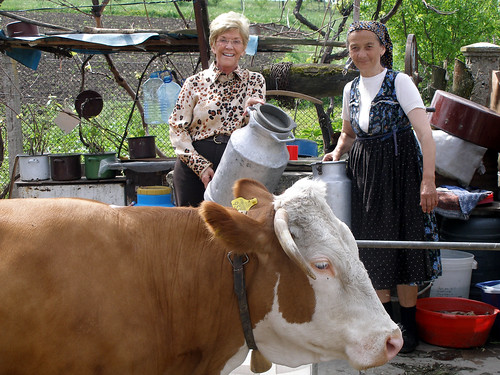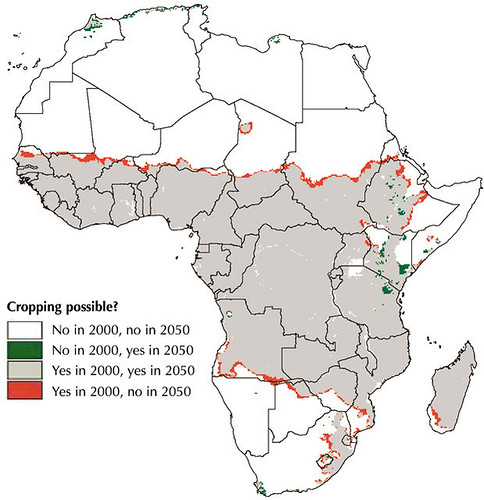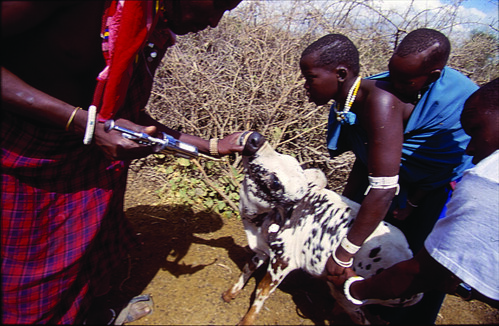US Secretary of State Hillary Rodham Clinton yesterday (16 June 2010) named Jo Luck, President of Heifer International, and David Beckmann, President of Bread for the World, co-winners of the 2010 World Food Prize for spearheading two of the world’s foremost grassroots organizations working to end hunger and poverty.
In awarding the World Food Prize to Jo Luck and Beckmann, the World Food Prize Foundation is honouring not only these extraordinary individuals, but also the central role of non-governmental humanitarian organizations generally in mobilizing and empowering everyday citizens to end hunger worldwide.
David Beckmann has been head of Bread for the World — a collective Christian voice to end hunger — since 1991. Beckmann has marshalled some quarter of a million constituents to legislate for changing policies, programs and conditions that allow hunger to persist.
Jo Luck has built Heifer International, founded in 1944 and headquartered in Little Rock, Arkansas, into one of the world’s premier hunger-fighting non-profit organizations. Her organization provides farm animals to extremely poor families, and in so doing, helps those families to become self-reliant.
Since becoming CEO of Heifer in 1992, Jo Luck expanded both the scope and impact of Heifer’s battle against hunger and poverty. To do this, she and her staff have worked with many local and global partners to institute animal husbandry policies, systems and practices that help people improve their lives.
One of Heifer’s partners is the Africa-based International Livestock Research Institute (ILRI). Jo Luck has served on ILRI’s board of trustees and her organization works with ILRI on a project to lift one million people in East Africa out of poverty through improved small-scale dairying.
Jo Luck has provided more than 30 kinds of farm animals—from bees to water buffaloes — along with trees, seeds and training — to families in desperate need of assets with which to build sustainable livelihoods. She has increased the number of long-term supporters of Heifer from 20,000 in 1992 to more than 500,000 in 2009. Her organization’s outreach has helped 12 million families –1.5 million families in 2009 alone — to put nutritious food on their tables while also helping to feed others through Heifer’s Passing on the Gift, which asks every family that receives an animal from Heifer to give one of its female offspring to another family in need.
Jo Luck's leadership at Heifer is characterized by full engagement of the hungry families and communities her organization works to benefit. And she has worked tirelessly to ensure that the American public has a better understanding of global issues, and the appropriate roles America and its people can play on the global stage. Heifer now has a broad and innovative portfolio of educational strategies promoting such understanding among its many US supporters. In particular, Jo Luck has raised public understanding of how life choices made by people in rich countries affect people living in chronic hunger and severe poverty.
To complement Heifer’s Passing on the Gift tradition, Jo Luck created an enabling framework, Cornerstones for Just and Sustainable Development, that imaginatively joins concerns for human nutrition and spiritual growth to management of animal and natural resources, gender equity, leadership and organizational and business development.
By placing animals and knowledge directly in the hands of farmers, Heifer has empowered millions of people, particularly women, to convert these assets into foods, jobs and incomes. A lasting legacy Jo Luck’s leadership of Heifer appears to be engaging aid donors and recipients alike emotionally as well as economically, which has proved to be a potent combination that provokes humanitarian action as well as visionary thinking.
Starting at Heifer as Director of International Program from 1989 to 1992, Jo Luck then served as president and CEO of Heifer International from 1992 to 2010. Earlier this year she stepped down as CEO and will remain president until 2011. She is writing a book about her experiences with the organization.
The 2010 World Food Prize will be formally presented to Jo Luck and David Beckmann at a ceremony at the Iowa State Capitol on 14 October 2010, which will be part of a 2010 Borlaug Dialogue that starts the previous day.
The theme of this year’s Dialogue is ‘Take it to the Farmer: Reaching the World’s Smallholders.’ Among the dignitaries who will make keynote presentations at the Dialogue are Kofi Annan, Chairman of the Alliance for a Green Revolution in Africa and 2001 Nobel Peace Prize Laureate; Howard Buffett, American philanthropist; Prabhu Pingall, Deputy Director of Agriculture at the Bill and Melinda Gates Foundation; Thomas Vilsack, US Secretary of Agriculture; and Carlos Seré, Director General of the International Livestock Research Institute. Seré will speak on the value of livestock in smallholder agriculture.
Further information about the Laureate Award Ceremony and symposium can be found at The World Food Prize.







